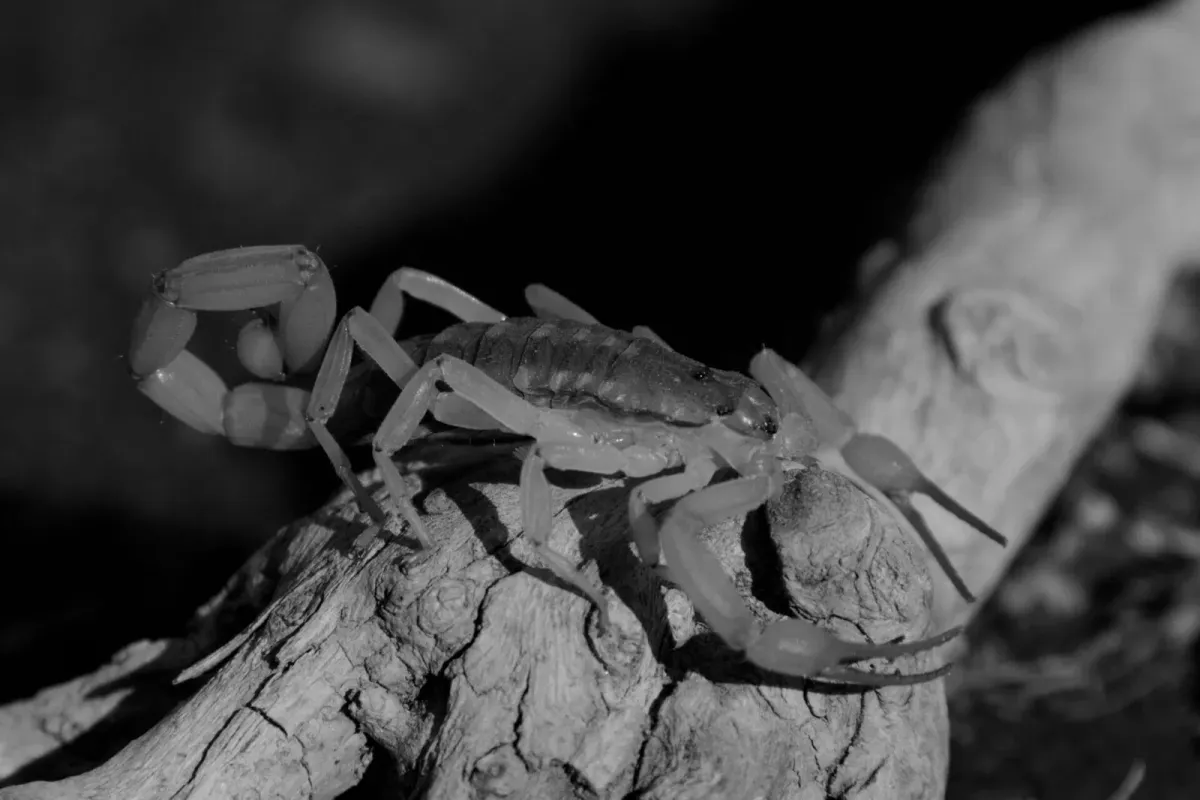3 Fascinating Scorpions in Texas | Including The One In Your House
There are 18 species of scorpions in Texas that have been documented. The exact number may vary slightly depending on different sources and ongoing research.

The untamed landscapes of Texas are home to a diverse array of wildlife that thrives, including the intriguing creatures known as scorpions. In this blog post, we will jump right into the world of scorpions in Texas, exploring their species diversity, habitats, behavior, and helpful tips to coexist (or not) with these captivating arachnids (yes, the same family as spiders!).
Scorpions in Texas: A Rich Tapestry of Species
Texas boasts a remarkable range of scorpion species, each with its own unique characteristics and preferred environments.
There are 18 species of scorpions in Texas that have been documented. The exact number may vary slightly depending on different sources and ongoing research. These scorpion species exhibit remarkable diversity in terms of appearance, behavior, and habitat preferences, contributing to the rich tapestry of scorpion life in Texas.
It's fascinating to explore the wide array of scorpion species that call Texas home.
Here are some noteworthy scorpions found in the Lone Star State:
A Quick Side Note: ExpertTexan.com participates in affiliate programs. Any links provided in the content below may be affiliate links that we benefit from financially. Please use our links as they help us to be able to continue providing you with quality content – free of charge.
Striped Bark Scorpion (Centruroides vittatus):

If you come across a scorpion inside your house in Texas, the most common species you are likely to encounter is the Striped Bark Scorpion (Centruroides vittatus). This species is widely distributed throughout the state and is known to adapt well to various environments, including residential areas.
- Size: Typically 2-3 inches long.
- Appearance: Tan to brown with distinctive dark stripes on its back.
- Habitat: Thrives in dry environments, often found in crevices, under rocks, or in debris.
- Behavior: Nocturnal hunters that feed on insects and other small arthropods.
Texas Cave Scorpion (Pseudouroctonus reddelli):
This species tends to be located within 100 feet of a cave. So, unless you have a cave on your property, the Texas Cave Scorpion is unlikely to be seen in your house.
- Size: Varies, usually around 2 inches long.
- Appearance: Pale yellow to tan, with slender bodies and long pincers.
- Habitat: Adapted to cave environments, often found in dark recesses and rocky areas.
- Behavior: Primarily nocturnal, these scorpions are excellent climbers and elusive hunters.
Desert Hairy Scorpion (Hadrurus arizonensis):
This is often referred to as a Giant Hairy Scorpion, and is the largest species of scorpion in North America. It likes to hang out in the desert.
- Size: One of the larger scorpion species in the world, growing up to 6 inches long.
- Appearance: Thick, dark bodies covered with bristle-like hairs.
- Habitat: Thrives in arid regions, such as deserts and sandy areas.
- Behavior: Skilled burrowers that emerge at night to hunt insects and small vertebrates.
Fascinating Facts and Behaviors

Scorpions exhibit intriguing behaviors and possess unique adaptations. Here are a few captivating facts about scorpions in Texas:
- Nocturnal Hunters: Scorpions are primarily active at night, relying on their keen senses and venomous stingers to capture prey.
- Luminous Glow: Under UV light, scorpions emit a mesmerizing glow due to fluorescent chemicals present in their exoskeletons.
- Venomous Stings: While scorpion stings can be painful, most species in Texas (including the ones most likely to be found inside a building) are not considered dangerous to humans, unless the individual is allergic or has a compromised immune system.
- Mating Rituals: During the breeding season, male scorpions engage in elaborate courtship dances to attract females, displaying intricate movements and gestures.
Coexistence and Safety Tips

While encountering scorpions in Texas is not uncommon, there are simple measures you can take to coexist safely with these incredible creatures:
- Home Maintenance: Seal cracks and openings in your home to prevent scorpions from entering. Pay attention to door thresholds, windows, and utility entry points.
- Outdoor Precautions: Clear debris, woodpiles, and tall grass around your property to reduce potential hiding spots for scorpions. Shake out clothing and shoes that have been left outside before wearing them.
- Caution in Nature: When hiking or exploring natural areas, be mindful of where you place your hands and feet. Wear protective clothing, including closed-toe shoes, when venturing into known scorpion habitats.
I live out in a very rural area of Texas that is prime habitat for the Striped Bark Scorpion (Centruroides vittatus). Because of that, I had to learn how to keep them out of my house, which I've done successfully for the past 4+ years. I wrote all about my effective methods on how to keep scorpions out of your house in a more detailed, separate article.
Conclusion:
Exploring the diverse world of scorpions in Texas unveils a fascinating realm of nature.
From the elusive Desert Hairy Scorpion to the common Striped Bark Scorpion, each species contributes to the ecological fabric of the state. By understanding their habits and habitats, using simple safety precautions, you can appreciate these captivating arachnids while ensuring a harmonious coexistence (assuming they don't come into your home ;).
Embark on your own scorpion adventure, but if you encounter them while out and about, always remember to observe them from a safe distance and respect their natural habitats.




